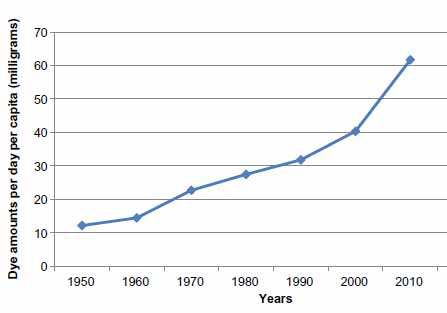
Laura Stevens is a
Research Associate at
Purdue University, Department of Nutrition Science, Indiana
Nutrition Review, 2013 May;71(5):268-81.
Stevens reviews the research on mechanisms by which food dyes and common foods may cause behavioral changes in children with and without ADHD. The three potential mechanisms are toxicological, antinutritional, and hypersensitivity.
Suggestions for future studies in animals or children include dose studies as well as studies of the effects of food dyes on the immune system, the intestinal mucosa, and nutrient absorption. It is important to determine why some children are more sensitive than others and to identify exposure limits for children in general and for children at high risk.

Figure 1 Per capita per day certification of food dyes (in mg) between 1950 and 2010, as certified by the US Food and Drug Administration




















